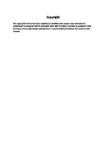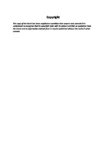Sense and Sensing: A critical enquiry into relations between hearing-impaired children, vision and photography
| dc.contributor.supervisor | Wells, Liz | |
| dc.contributor.author | Robinson, Kevin | |
| dc.contributor.other | School of Art, Design and Architecture | en_US |
| dc.date.accessioned | 2021-05-10T15:04:02Z | |
| dc.date.issued | 2021 | |
| dc.identifier | 10420910 | en_US |
| dc.identifier.uri | http://hdl.handle.net/10026.1/17109 | |
| dc.description.abstract |
This thesis explores and critiques attitudes and assumptions related to hearing-impaired, school-level students and their engagement with the educational discipline of photography. It is not uncommon to find that hearing-impaired children are described as visual learners. This thesis argues that the conceptualisation of children as visual learners merely reflects a wider discourse that aims to legitimise a certain practice of schooling as normative. In appearing as common-sense and value neutral, the discourse has the tendency to perpetuate the marginalisation of those senses deemed less noble and the pedagogical insistence on a premise that posits a link between looking, seeing and knowing, remains. It is argued that distinguishing the sense of sight from that of listening and from the body, and the westernised privileging of seeing has had ramifications across the educational landscape for methodologies employed in facilitating language acquisition for such cohorts of children. This includes the organisation of their photographic learning experiences; the architectural structure of buildings, classrooms, and the systematised pedagogic and educational narratives that are mobilised in the pursuit of pupil progress. Engaging with Mitchell, Serres, Di Bello, Deleuze and Guattari, Merleau-Ponty, Foucault and others, this thesis destabilises the dominant discourses upon which such assumptions are founded and framed unproblematically, as common-sense. What would the educational landscape for hearing-impaired children, as expressed through photography, ‘feel’ like, ‘smell’ like, ‘taste’ like, ‘sound’ like and of course, ‘look’ like, if a more nuanced, synesthetic shift were embraced that engaged with sensory modalities beyond that of vision and hearing? This study explores these debates through references to photographic material created by students in secondary level education and through references to photographic activities conducted outside of the formal curriculum. In doing so, it opens up a critical space within which familiarised traditions of knowledge formations for the hearing-impaired child are challenged. | en_US |
| dc.language.iso | en | |
| dc.publisher | University of Plymouth | |
| dc.rights | Attribution-NonCommercial-NoDerivs 3.0 United States | * |
| dc.rights.uri | http://creativecommons.org/licenses/by-nc-nd/3.0/us/ | * |
| dc.subject | Photography | en_US |
| dc.subject | Hearing Impairment | |
| dc.subject | Vision | |
| dc.subject | Language | |
| dc.subject | Childhood | |
| dc.subject | Performance | |
| dc.subject.classification | PhD | en_US |
| dc.title | Sense and Sensing: A critical enquiry into relations between hearing-impaired children, vision and photography | en_US |
| dc.type | Thesis | |
| plymouth.version | non-publishable | en_US |
| dc.identifier.doi | http://dx.doi.org/10.24382/906 | |
| dc.identifier.doi | http://dx.doi.org/10.24382/906 | |
| dc.type.qualification | Doctorate | en_US |
| rioxxterms.version | NA |
Files in this item
This item appears in the following Collection(s)
-
01 Research Theses Main Collection
Research Theses Main




